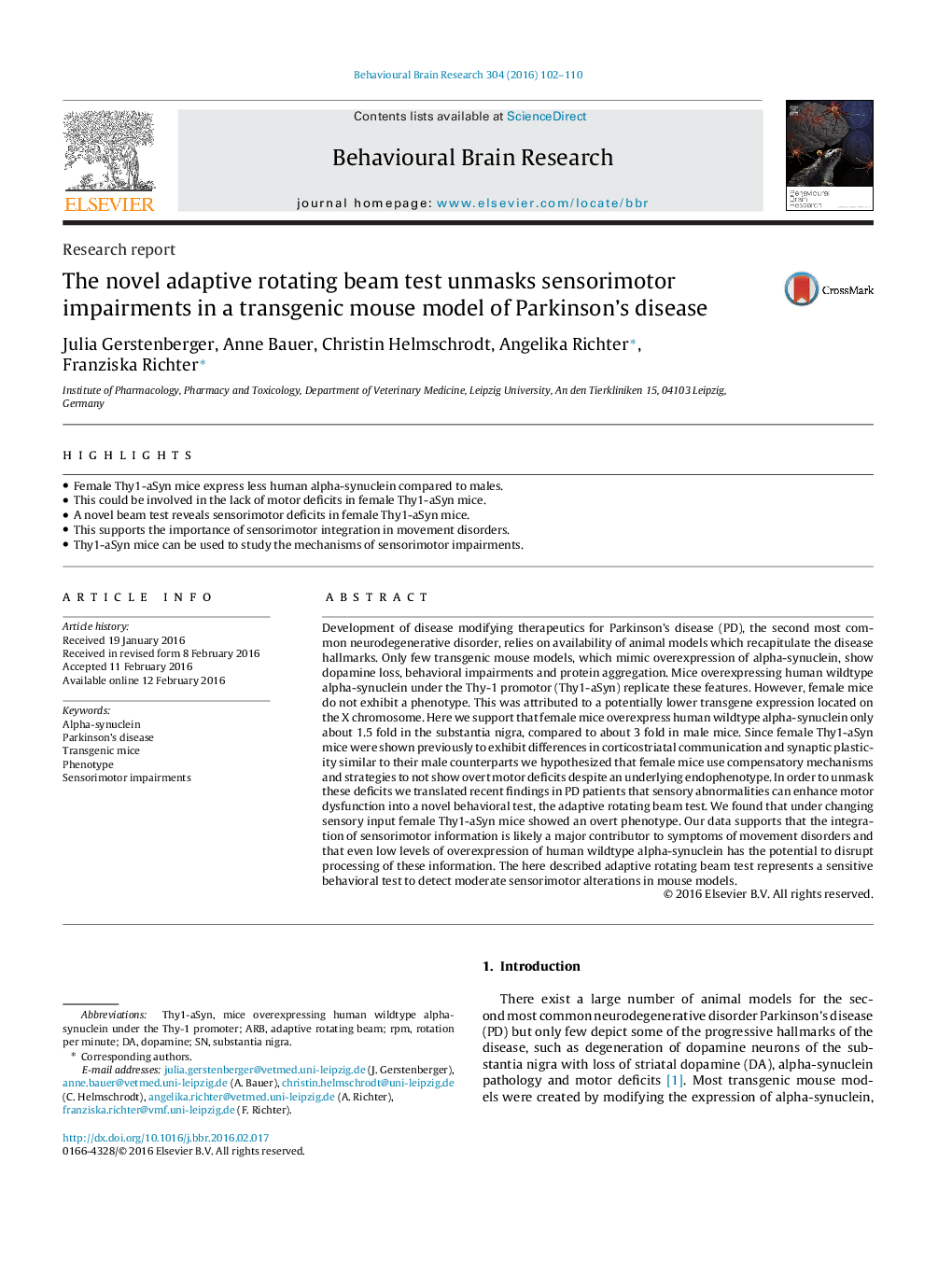| Article ID | Journal | Published Year | Pages | File Type |
|---|---|---|---|---|
| 4312186 | Behavioural Brain Research | 2016 | 9 Pages |
•Female Thy1-aSyn mice express less human alpha-synuclein compared to males.•This could be involved in the lack of motor deficits in female Thy1-aSyn mice.•A novel beam test reveals sensorimotor deficits in female Thy1-aSyn mice.•This supports the importance of sensorimotor integration in movement disorders.•Thy1-aSyn mice can be used to study the mechanisms of sensorimotor impairments.
Development of disease modifying therapeutics for Parkinson’s disease (PD), the second most common neurodegenerative disorder, relies on availability of animal models which recapitulate the disease hallmarks. Only few transgenic mouse models, which mimic overexpression of alpha-synuclein, show dopamine loss, behavioral impairments and protein aggregation. Mice overexpressing human wildtype alpha-synuclein under the Thy-1 promotor (Thy1-aSyn) replicate these features. However, female mice do not exhibit a phenotype. This was attributed to a potentially lower transgene expression located on the X chromosome. Here we support that female mice overexpress human wildtype alpha-synuclein only about 1.5 fold in the substantia nigra, compared to about 3 fold in male mice. Since female Thy1-aSyn mice were shown previously to exhibit differences in corticostriatal communication and synaptic plasticity similar to their male counterparts we hypothesized that female mice use compensatory mechanisms and strategies to not show overt motor deficits despite an underlying endophenotype. In order to unmask these deficits we translated recent findings in PD patients that sensory abnormalities can enhance motor dysfunction into a novel behavioral test, the adaptive rotating beam test. We found that under changing sensory input female Thy1-aSyn mice showed an overt phenotype. Our data supports that the integration of sensorimotor information is likely a major contributor to symptoms of movement disorders and that even low levels of overexpression of human wildtype alpha-synuclein has the potential to disrupt processing of these information. The here described adaptive rotating beam test represents a sensitive behavioral test to detect moderate sensorimotor alterations in mouse models.
